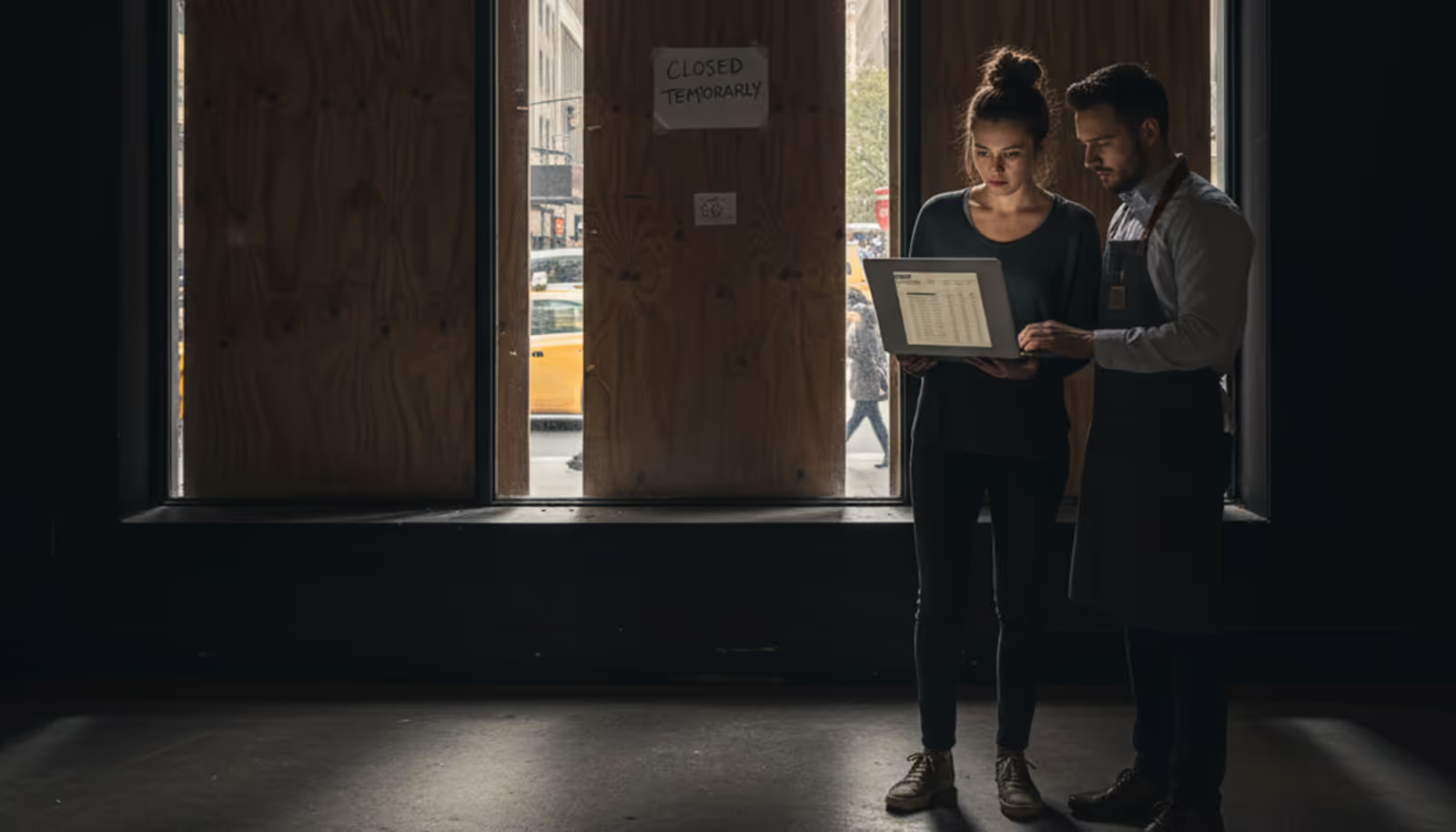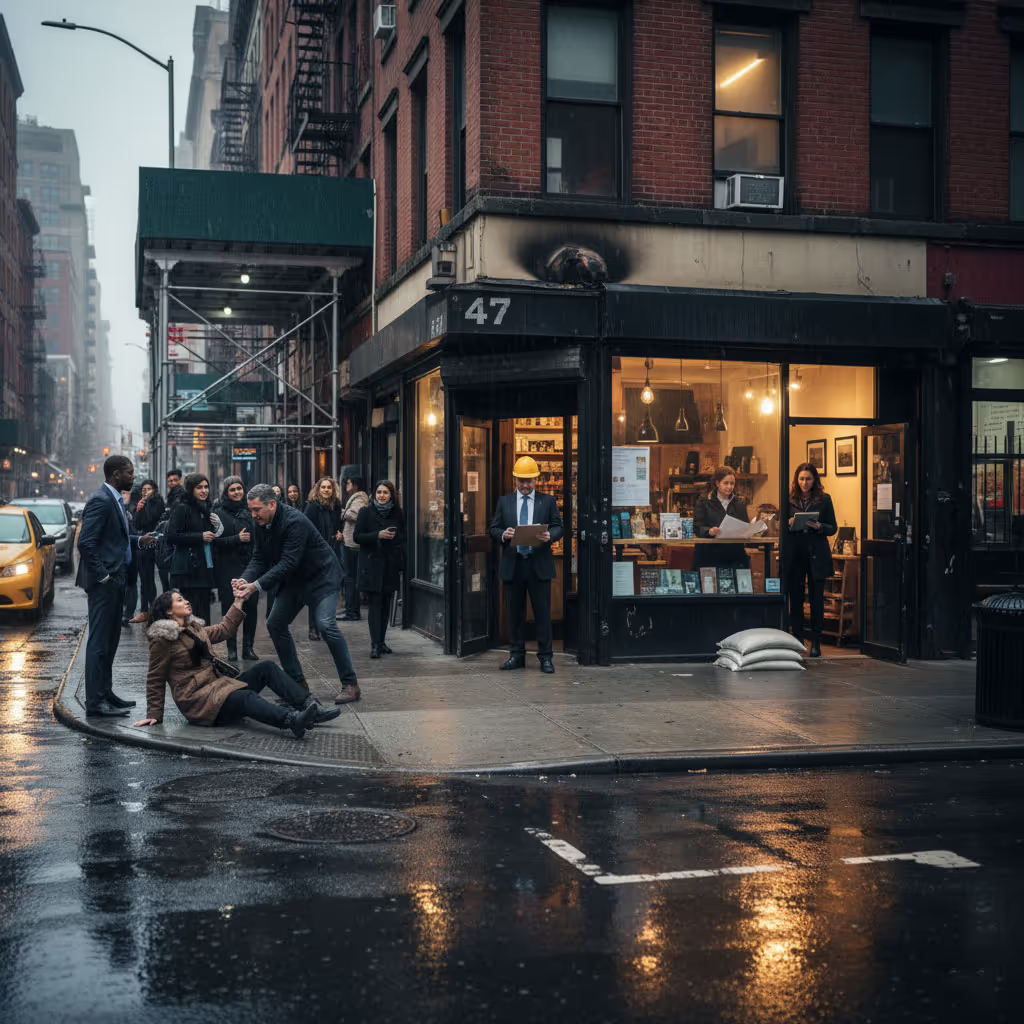New York Central Mutual Insurance Co.
New York Business Owner Policy Insurance: A Complete Guide For Entrepreneurs
Running a business in New York brings distinct challenges — from high foot traffic in Manhattan to changing regulations across boroughs. A well-structured Business Owner Policy (BOP) provides core protection for your property, liability, and income so you can focus on growth instead of risks. This guide explains what a BOP covers, why New York business owners need it, and how to choose the right policy for your state-specific needs.

What is a Business Owner Policy (BOP) and Why Long Island Businesses Need It
A Business Owner Policy (BOP) bundles key coverages that most small businesses need into a single, simplified policy. Instead of buying separate policies, a BOP typically combines property insurance and general liability, which can reduce overall costs and administrative hassle.

Core components: property insurance (protects buildings, equipment, inventory), general liability (covers third-party injury and property damage), and business interruption (replaces lost income when a covered event forces temporary closure).
Why New York business owners choose a BOP: high foot traffic, dense urban locations, and weather-related risks mean consolidated coverage often provides better value and clearer protection than piecemeal policies.
Note on variability: coverages, limits, and exclusions vary by insurer and policy form—business interruption and add-ons (like cyber or flood) may be subject to sublimits or require separate endorsements.
Business interruption: a short definition — this coverage helps pay ongoing expenses and lost profits if your operations are halted by a covered loss, but it usually has a waiting period and limit tied to the policy's terms.
Protect Your New York Business Today
Compare coverage options and get a tailored quote to see which BOP fits your Long Island business—especially if you use company vehicles or employ staff (these coverages have state requirements).
Get Free NY Business Owner Insurance QuoteKey Components of BOP Coverage for New York Businesses
Understanding the parts of a Business Owner Policy (BOP) helps New York business owners choose the right protection. Below are the core coverages found in most BOPs, what they typically pay for, common exclusions, and when you should consider increasing limits or adding endorsements.
Property Insurance

What it covers: damage to buildings, furniture, equipment, inventory, and signage caused by fire, theft, vandalism, and many weather events. For New York businesses, adequate property limits are important because replacement costs in the state are often higher than average.
Common exclusions: flood, earthquake, wear and tear, and some types of theft—these may require separate policies or endorsements.
When you need more: if you own high-value equipment, lease space in Manhattan, or face ordinance upgrade costs after a loss, increase limits or add ordinance and law coverage.
General Liability

What it covers: third-party bodily injury, property damage, and advertising injury claims—including medical payments and legal defense costs if a customer is hurt on your premises.
Typical limits & notes: standard limits can vary; for busy NYC locations you may want higher limits to protect against large settlements related to bodily injury or property damage.
When you need it: every business serving customers or hosting foot traffic needs robust general liability; consider adding umbrella coverage for extra liability protection.
Business Interruption

What it covers: lost income, ongoing payroll, and extra expenses if a covered loss forces temporary closure. In New York's high-rent environment, BI coverage can prevent immediate cash-flow crises after a loss.
Important limits: policies usually have a waiting period and a time-limited benefit; confirm the period and whether extended business income is included.
When you need more: businesses with tight margins or significant rent/lease costs should buy higher BI limits or extended period options.
Additional Coverages Often Included or Available as Add-Ons:
Equipment breakdown protection — useful for restaurants and businesses with costly machinery
Valuable papers and records coverage — protects business records and data backups
Accounts receivable protection — covers losses if customer invoices become uncollectible after a loss
Limited data breach / cyber coverage — helpful for businesses that handle customer data, though broader cyber policies may be required
Money and securities protection — for businesses that handle cash or negotiable instruments
Note: professional liability (errors & omissions) is not typically included in a standard BOP and should be purchased separately if you provide professional services.
Unique Risks Faced by New York Businesses
Long Island presents a mix of opportunities and localized risks that make tailored BOP coverage essential. Below are common state-specific exposures and one practical policy tweak to consider for each.

High Foot Traffic
Risk: Dense pedestrian volumes, especially in Manhattan and popular Brooklyn neighborhoods, increase slip-and-fall and customer injury claims.
Recommended tweak: Raise general liability limits and confirm medical payment sublimits to cover bodily injury and related legal defense costs.
Extreme Weather Events
Risk: Winter storms, heavy rain, and localized flooding can damage property and interrupt operations.
Recommended tweak: Add or review business interruption and equipment breakdown limits; purchase separate flood insurance where flood risk exists since flood is commonly excluded from standard BOPs.
Urban Density and Fire Risk
Risk: Close building proximity can lead to rapid fire spread and higher property damage exposure for neighboring businesses.
Recommended tweak: Ensure adequate property limits and consider ordinance and law coverage to cover rebuilding to current codes after a loss.
Strict Regulatory Environment
Risk: New York has extensive local and state regulations that can create legal or compliance-related expenses after business changes or accidents.
Recommended tweak: Discuss endorsements or a small regulatory/legal expense coverage where available, and keep records to support compliance in claims.
High Property Values
Risk: Replacement costs for property and equipment in New York often run higher than in many other states, increasing the financial impact of property damage.
Recommended tweak: Use replacement-cost valuations for property limits where possible and periodically update your inventory to reflect true replacement value.

"After a pipe burst in the building next door damaged our inventory, our BOP coverage saved our Long Island boutique from financial disaster. The business interruption component covered our expenses while we were closed for repairs, and we didn't lose a single employee."
— Sarah C, owner, Boutique
Cost of BOP Insurance in New York: What to Expect
Business Owner Policy insurance for a New York business can vary widely — a typical range for small to mid-size operations is roughly $500 to $3,500 per year depending on risk factors and coverage choices. Use that range as a starting point, but expect your final cost to reflect your location, industry, and selected limits.

Key Factors Influencing Your BOP Premium
Business Size
Larger businesses with more employees, higher revenue, and bigger physical footprints typically pay more for business insurance. A small café or retail shop will usually see lower premiums than a busy restaurant or multi-location business.
Location
Neighborhood matters in New York. Businesses in Manhattan and parts of Brooklyn usually face higher premiums than those in Staten Island or upstate areas because of higher property values, greater foot traffic, and different crime/storm exposure.
Industry Type
Riskier industries such as restaurants, contractors, and retail with on-site customers often pay higher rates due to greater chances of property damage, customer injuries, or equipment loss.
Building Characteristics
Older buildings or locations with outdated wiring, plumbing, or structural issues can increase premiums. Safety upgrades like sprinklers and modern security systems may reduce your rates.
Coverage Limits
Higher coverage limits and broader coverage options (e.g., replacement-cost property valuation, extended business interruption) raise costs, but they reduce the risk of underinsurance in New York's high-cost repair market.
Claims History
A business with prior claims typically pays more. Strong risk management and a clean claims record can lower premiums over time.
Cost-Saving Tips:
• Bundle policies or raise deductibles to lower premiums—compare savings vs. out-of-pocket exposure.
• Install and maintain security systems, fire suppression, and routine maintenance programs to qualify for discounts.
• Shop multiple providers and ask about industry-specific discounts, especially if you are a small business or owner-operated.
• Periodically update your inventory and property values so you’re not overpaying for unnecessary coverage or underinsured in a claim.
Note: The $500–$3,500 range is a general guideline. For a precise estimate tailored to your New York business, get quotes from several insurers or speak with a local broker who understands state requirements (for example, workers' compensation if you have employees or commercial auto if your business uses vehicles).
Top BOP Insurance Providers in New York
Choosing the right insurance provider is as important as selecting the right coverage. Below are five New York-focused BOP carriers to consider, selected for their regional presence and commercial insurance offerings. Costs and exact offerings vary by business — obtain quotes for accurate pricing.
Provider
Coverage Highlights
Average Annual Cost
Best For
Regional focus with strong property and general liability options; common endorsements include equipment breakdown and accounts receivable.
Varies by business — typically competitive for small to mid-size operations
Local retailers, small manufacturers, and owner-operated businesses seeking NY-focused underwriting
Utica National Insurance Co.
Comprehensive BOP packages with options for business interruption and cyber/data breach endorsements; known for risk management resources.
Varies by business — consult for tailored quote
Service businesses, professional offices, and businesses that value risk control support
Security Mutual Insurance Co.
Varies by business — often affordable for small business owners
Varies by business — often affordable for small business owners
Small businesses, shops, and non-complex operations seeking straightforward policies
United States Liability Insurance Co.
Focus on liability solutions with options for higher general liability limits and endorsements for professional liability where needed.
Varies by business — liability-focused plans may carry higher premiums for high-risk operations
Businesses with high customer exposure or professional-services firms needing strong liability protection
Granada Insurance Co.
Regional carrier offering tailored BOP coverages with available endorsements for equipment, valuable papers, and accounts receivable.
Varies by business — competitive for local New York businesses
Local small businesses, neighborhood retailers, and service providers

Compare Quotes from These Long Island Providers
Get personalized BOP insurance quotes from regional carriers to find the best coverage and price for your New York business.
Get Free NY Business Owner Insurance QuoteOr call 631.758.1550 to speak with an insurance specialist
Real-World Examples: How BOP Insurance Protected New York Businesses

Brooklyn Café Survives Plumbing Disaster
Event: A water pipe burst in the apartment above caused extensive ceiling and equipment damage, forcing a two-week closure.
BOP coverage used: property insurance for repairs and equipment replacement, plus business interruption to replace lost income and cover temporary relocation costs.
• Outcome (illustrative): property repairs and equipment replacement, lost income coverage, and relocation expenses helped the café reopen without layoffs.
Key takeaway: small businesses should confirm replacement-cost property limits and adequate business interruption periods to avoid cash-flow gaps after a loss.

Manhattan Retailer Avoids Liability Nightmare
Event: A customer slipped on a wet floor and suffered a significant wrist injury; a lawsuit followed.
BOP coverage used: general liability covered legal defense and settlement costs, plus medical payments for the injured customer.
• Outcome (illustrative): insured legal defense and settlement funds prevented the retailer from facing bankruptcy and protected employees and ongoing operations.
Key takeaway: high-traffic New York locations should consider higher general liability limits and an umbrella policy to protect against expensive bodily injury claims.
Note: These examples are anonymized, illustrative case summaries based on typical BOP claims to show how property damage, business interruption, and general liability protections can work in practice. Check your policy limits, exclusions, and sublimits to understand how a similar loss would be handled for your business insurance needs.
How to Choose the Right BOP for Your New York Business
Selecting the right Business Owner Policy means matching coverage to the specific risks your business faces. Use the short, actionable steps below to evaluate options, ask the right questions, and secure appropriate coverage at a competitive price.

1. Assess Your Specific Risks — Why it matters
Identify risks related to your industry, location, and daily operations. A restaurant faces different exposures than a consulting firm; a Manhattan storefront has different needs than a suburban or upstate location.
Ask your agent: What perils are most common for businesses like mine in this neighborhood?
2. Create a Complete Inventory — Why it matters
Document equipment, stock, furniture, and other assets with photos and estimated replacement costs so you can choose accurate property limits.
Ask your agent: Should I use replacement-cost or actual-cash-value valuation for my property?
3. Compare Multiple Quotes — Why it matters
Obtain quotes from several insurers (three or more is a good benchmark) to compare pricing, coverage options, and exclusions—not just the premium.
Ask your agent: What are the deductibles, sublimits, and waiting periods for business interruption?
4. Review Policy Exclusions Carefully — Why it matters
Know what’s not covered—common exclusions include flood, earthquake, certain cyber events, and some types of theft or employee-related claims.
Ask your agent: Which exclusions should I be most concerned about, and what add-ons do you recommend?
5. Consider Necessary Add-ons — Why it matters
Depending on your exposures, consider flood insurance, cyber liability, professional liability (for service providers), employment practices liability, and ordinance or code upgrade coverage.
Ask your agent: Which endorsements are commonly recommended for New York businesses in my industry?
6. Consult with an Insurance Expert — Why it matters
Work with a broker or agent who specializes in commercial insurance for New York businesses; they can identify gaps, recommend state-specific solutions, and explain workers' compensation or commercial auto requirements if applicable.
Ask your agent: Are there local discounts or loss-control programs that could lower my premium?
Red Flags to Watch For
• Vague policy language or unclear exclusions
• Unusually low limits for business interruption or property in high-cost areas
• No option for ordinance and law coverage where building upgrades may be required
• Insufficient liability limits for customer-facing operations
Protect Your Long Island Business with the Right BOP Coverage
A well-chosen Business Owner Policy is the foundation of financial protection for your New York business. Understand core coverage components, address state-specific risks, and compare providers so you get dependable protection that lets you focus on growth instead of uninsured losses.
Make it a best practice to review your BOP annually and after major changes—expansion, new equipment purchases, or adding services—to ensure your policy limits and endorsements still match your exposures.
Get a Quote and Compare New York Providers
Compare quotes from the five New York carriers highlighted above to find the coverage and price that fit your business needs.
Get Free NY Business Owner Insurance QuotePrefer to speak with an expert? Call 631.758.1550

Frequently Asked Questions About New York BOP Insurance
Is BOP insurance legally required for New York businesses?
No — a BOP itself is not legally required in New York. However, certain coverages commonly associated with a BOP may be mandatory: workers' compensation is required if you have employees, and commercial auto insurance is required for business vehicles. Landlords or contracts may also require general liability insurance as a leasing condition.
- See NY requirements: check the New York State Department of Labor for workers' compensation rules and the NY DMV for commercial auto guidance.
How is a BOP different from general liability insurance?
A BOP bundles multiple protections into one package. General liability insurance only covers third-party bodily injury, property damage, and advertising injury. A BOP combines general liability with property insurance and business interruption, giving broader protection for both the business and third parties.
- Use-case: general liability alone may suffice for some service providers, but many small businesses benefit from the consolidated coverage and cost-savings of a BOP.
Can home-based businesses in New York benefit from BOP insurance?
Yes. Homeowners or renters insurance usually excludes many business exposures. A BOP (or a tailored business policy) can cover business property, liability for customers or deliveries, and lost income related to business operations conducted from home.
- If you run a small business from home, ask about limits for equipment and liability and whether a BOP or a smaller commercial package policy is the best fit.
How quickly can I get BOP coverage for my New York business?
Turnaround varies. Many insurers can bind standard BOPs within 24–48 hours after application approval, and some online providers offer same-day issuance for simple risks. Complex businesses, higher limits, or poor claims history may require extended underwriting and documentation.
- Tip: have your inventory, payroll, and loss history ready to speed the process.
Does a New York BOP cover damage from snow, ice, or winter storms?
Most standard BOPs cover many winter-related perils such as damage from weight of snow or ice, frozen pipes, and wind damage, but policy specifics vary. Flooding from storm surge or melting snow runoff is commonly excluded and usually requires separate flood insurance.
- Action: review your policy's perils, confirm waiting periods for business interruption, and consider separate flood coverage if your location is at risk.
Which New York carriers should small businesses consider?
For New York businesses, consider regional carriers with a local underwriting presence and commercial products designed for small enterprises. The carriers highlighted in this guide include New York Central Mutual Insurance Co., Utica National Insurance Co., Security Mutual Insurance Co., United States Liability Insurance Co., and Granada Insurance Co. Each offers varying strengths—property focus, liability options, equipment endorsements, or risk-management support—so request quotes and check endorsements that match your exposures.
- Tip: ask each carrier about business interruption waiting periods, equipment breakdown options, and available endorsements for professional liability or cyber if relevant to your services.
Still have questions? Contact an expert to review your policy or
Get Free NY Business Owner Insurance Quotelisted earlier.

